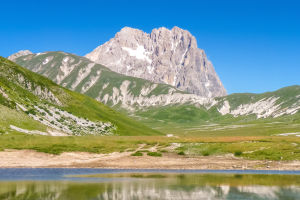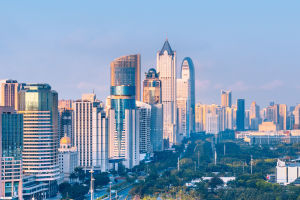The Alps, one of Europe's most stunning mountain ranges, offer something for every traveler.
Spanning eight countries—France, Switzerland, Italy, Austria, Germany, Slovenia, Liechtenstein, and Monaco—the Alps provide endless opportunities for adventure, relaxation, and exploration.
From skiing to hiking, scenic train rides to quaint alpine villages, the Alps are a must-see destination for nature lovers, thrill-seekers, and anyone who enjoys beautiful landscapes.
In this guide, we’ll walk you through everything you need to know for an unforgettable trip to the Alps: how to get there, what to do, when to visit, and helpful tips for making the most of your time in this iconic region.
How to Get There: Best Travel Routes to the Alps
The Alps are easy to reach from major European cities. If you’re flying, the closest airports to the Alps are in Geneva, Zurich, Milan, and Munich. From these cities, you can take a scenic train ride to the heart of the Alps. The Swiss Federal Railways (SBB), French SNCF, and Italian Trenitalia all offer comfortable and efficient services, connecting major cities to Alpine destinations.
For example:
- From Geneva to Chamonix (France): A direct bus or train ride takes about 1.5 hours.
- From Zurich to Zermatt (Switzerland): A scenic train ride on the Glacier Express takes about 3.5 hours.
- From Milan to the Dolomites (Italy): A 2-hour train or bus ride will take you right into the stunning Italian Alps.
If you're traveling within the Alps, consider renting a car to explore at your own pace. Keep in mind that some mountain roads might require a 4x4 vehicle, especially during the winter months.
Best Time to Visit the Alps
The best time to visit the Alps depends on the activities you're interested in:
Winter (December to March): Ideal for skiing, snowboarding, and other winter sports. Famous ski resorts like Chamonix (France), Zermatt (Switzerland), and Cortina d’Ampezzo (Italy) offer world-class facilities. Ski pass prices typically range from $45 to $110 per day, depending on the resort.
Tip: Book ski passes in advance for discounts, especially during peak season (Christmas and New Year holidays).
Summer (June to September): The perfect time for hiking, mountain biking, and outdoor activities. Many hiking trails are open, including famous routes like the Tour du Mont Blanc (11 days of hiking through France, Switzerland, and Italy) and the Dolomites in Italy. Prices for hiking tours or cable cars range from $22 to $55 per ride.
Tip: Summer festivals in the Alps (like the Alpabzug Festival in Switzerland) are a great way to experience local culture.
Autumn (October to November): This is a quieter time to visit, offering fewer crowds and beautiful autumn foliage. It’s great for scenic drives and peaceful walks. However, many higher-altitude activities may be limited.
Top Activities and Things to Do in the Alps
The Alps are a haven for outdoor enthusiasts, but there's so much more to see and do! Here’s a breakdown of top activities with specific details on prices and opening times:
1. Skiing and Snowboarding:
- Chamonix (France): One of the oldest ski resorts in the world, open from mid-December to April. Lift passes range from $55 to $90 per day.
- Zermatt (Switzerland): Skiing at the base of the iconic Matterhorn mountain. Open from November to April, with lift passes from $75 to $110 per day.
2. Hiking:
- Lake Geneva (Switzerland): The lakeside trail offers a relaxing walk with views of vineyards and the Alps. Free to access.
- The Matterhorn Glacier Paradise (Zermatt): A unique opportunity to hike in the highest cable car station in Europe, with tickets starting at $55 for a round trip.
3. Alpine Cable Car Rides:
- Klein Matterhorn (Switzerland): One of the most popular cable car journeys in the Alps, taking you up to the highest cable car station in Europe. Tickets start at $90 for a round trip.
- Jungfrau (Switzerland): Known as the "Top of Europe," tickets for the Jungfrau Railway cost around $110–$130 for a round trip.
4. Alpine Villages:
Visit picturesque villages such as Grindelwald (Switzerland) and Cortina d'Ampezzo (Italy). These charming spots offer cozy cafes, local markets, and traditional alpine architecture. Prices for meals in alpine villages range from $16 to $33 per person.
Practical Travel Tips for Your Alpine Adventure
1. Book Accommodation in Advance: Hotels and mountain lodges can fill up quickly, especially during peak seasons. You can expect to pay anywhere from $90 to $220 per night, depending on location and luxury level. Consider staying in Zermatt or Chamonix for convenient access to skiing areas, or in smaller villages like Grindelwald for a more peaceful experience.
2. Dress Appropriately: The weather in the Alps can be unpredictable. Layered clothing is essential. Pack light waterproofs and sturdy hiking boots for outdoor activities. Don’t forget sunglasses and sunscreen—high altitudes can lead to sunburn, even in winter!
3. Stay Hydrated and Pack Snacks: While hiking, especially on longer routes like the Tour du Mont Blanc, it’s important to bring plenty of water and energy snacks like trail mix or granola packs. There are few opportunities to buy food along the more remote trails.
4. Safety First: Whether you’re skiing, hiking, or climbing, always check weather conditions before heading out. High-altitude areas can have sudden weather changes, and it’s crucial to be prepared. If you’re venturing into remote areas, consider hiring a local guide.
5. Health and Insurance: Make sure you have comprehensive travel insurance, especially if you're planning on skiing or participating in high-risk activities.
Your Alpine Adventure Awaits!
The Alps offer stunning landscapes, thrilling activities, and peaceful retreats, making them a perfect destination for travelers of all kinds. From snow-covered peaks to charming villages, every corner of this mountain range has something special to explore.
Now is the time to plan your journey, experience the fresh mountain air, and create unforgettable memories. Pack your bags, set out on an adventure, and let the beauty of the Alps leave a lasting impression. Safe travels, Lykkers, and enjoy every step of the way!
The Alps 4K | Drone & iPhone X
Video by Gaëtan Piolot


